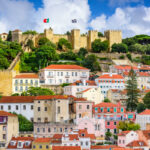Lisbon Cathedral: A Journey Through History and Highlights
Introduction
Lisbon, the capital of Portugal, is a city adorned with a rich tapestry of history and culture. At the heart of this vibrant city stands the Lisbon Cathedral, a historic masterpiece that has witnessed centuries of events, and continues to stand as a symbol of Portugal’s heritage. In this article, we will delve into the history, highlights, and what to visit at the Lisbon Cathedral, taking you on a journey through time and architecture.
Unveiling the History
The Lisbon Cathedral, also known as the Sé de Lisboa, boasts a history dating back to the 12th century. This magnificent cathedral was constructed shortly after the city was reclaimed from the Moors by Portugal’s first king, Dom Afonso Henriques, in 1147.
Architectural Marvels
The cathedral features a blend of architectural styles, with Romanesque, Gothic, and Baroque influences that have evolved over time. Its facades are adorned with intricate stone carvings, while the interior exudes a sense of grandeur with soaring ceilings and beautifully crafted stained glass windows.
Rose Window: A Stained Glass Spectacle
One of the highlights of the Lisbon Cathedral is the stunning rose window. This masterpiece of stained glass artistry bathes the cathedral’s interior in a mesmerizing kaleidoscope of colors, creating an ethereal atmosphere that leaves visitors in awe.
The Cloisters: Tranquil Oasis
The cathedral’s cloisters are a serene retreat from the bustling city. These Gothic cloisters, with their delicate arches and lush gardens, provide a peaceful haven for reflection and relaxation.
Treasures of the Cathedral
The Lisbon Cathedral houses an array of treasures that have been carefully preserved throughout the centuries. Notable among these is the impressive treasury, which showcases religious relics and artifacts.
What to Visit
While exploring the Lisbon Cathedral, there are several key areas to include in your visit.
The Main Chapel: Awe-Inspiring Altarpiece
The main chapel boasts a majestic altarpiece, adorned with intricate gold leaf and stunning religious art. It stands as a testament to the faith and craftsmanship of the era.
Cathedral Museum: A Glimpse into the Past
Visitors can delve deeper into the cathedral’s history at the museum, which houses a collection of artifacts, manuscripts, and art pieces, offering valuable insights into Lisbon’s past.
Exploring the Surroundings
The Lisbon Cathedral is situated in the historic Alfama district, and a visit here provides an excellent opportunity to explore the surrounding areas.
Alfama: A Step Back in Time
Wandering through the narrow streets of Alfama, you’ll encounter charming old buildings, traditional Fado music, and a genuine sense of the city’s past.
São Jorge Castle: Majestic Views
Just a short walk from the cathedral, São Jorge Castle offers panoramic views of Lisbon. It’s an ideal spot to take in the city’s skyline and snap some memorable photos.
Conclusion
The Lisbon Cathedral, with its rich history and architectural splendor, is a must-visit destination for history enthusiasts and anyone looking to experience the heart of Lisbon’s culture. As you step inside, you’ll be transported back in time, and the beauty of the cathedral will leave an indelible mark on your memory.
FAQs
- Is the Lisbon Cathedral open to the public?
- Yes, the Lisbon Cathedral is open to visitors. You can explore its magnificent interior and historical artifacts.
- What is the best time to visit the Lisbon Cathedral?
- The best time to visit is in the morning to avoid crowds and have the cathedral to yourself for a more serene experience.
- Are there guided tours available at the cathedral?
- Yes, guided tours are available and highly recommended to gain a deeper understanding of the cathedral’s history and significance.
- Can you attend mass at the Lisbon Cathedral?
- Yes, the cathedral holds regular religious services, and you are welcome to attend if you wish.
- Is there an entrance fee to the Lisbon Cathedral?
- While entry to the cathedral is free, there may be a fee for visiting certain sections, such as the museum and cloisters.








